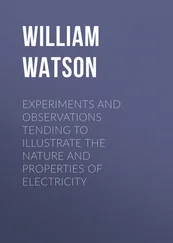Mark Changizi - Harnessed - How Language and Music Mimicked Nature and Transformed Ape to Man
Здесь есть возможность читать онлайн «Mark Changizi - Harnessed - How Language and Music Mimicked Nature and Transformed Ape to Man» весь текст электронной книги совершенно бесплатно (целиком полную версию без сокращений). В некоторых случаях можно слушать аудио, скачать через торрент в формате fb2 и присутствует краткое содержание. Год выпуска: 2011, Издательство: Perseus Books Group, Жанр: Старинная литература, на английском языке. Описание произведения, (предисловие) а так же отзывы посетителей доступны на портале библиотеки ЛибКат.
- Название:Harnessed: How Language and Music Mimicked Nature and Transformed Ape to Man
- Автор:
- Издательство:Perseus Books Group
- Жанр:
- Год:2011
- ISBN:нет данных
- Рейтинг книги:5 / 5. Голосов: 1
-
Избранное:Добавить в избранное
- Отзывы:
-
Ваша оценка:
- 100
- 1
- 2
- 3
- 4
- 5
Harnessed: How Language and Music Mimicked Nature and Transformed Ape to Man: краткое содержание, описание и аннотация
Предлагаем к чтению аннотацию, описание, краткое содержание или предисловие (зависит от того, что написал сам автор книги «Harnessed: How Language and Music Mimicked Nature and Transformed Ape to Man»). Если вы не нашли необходимую информацию о книге — напишите в комментариях, мы постараемся отыскать её.
Harnessed: How Language and Music Mimicked Nature and Transformed Ape to Man — читать онлайн бесплатно полную книгу (весь текст) целиком
Ниже представлен текст книги, разбитый по страницам. Система сохранения места последней прочитанной страницы, позволяет с удобством читать онлайн бесплатно книгу «Harnessed: How Language and Music Mimicked Nature and Transformed Ape to Man», без необходимости каждый раз заново искать на чём Вы остановились. Поставьте закладку, и сможете в любой момент перейти на страницу, на которой закончили чтение.
Интервал:
Закладка:
One final thought concerning the mismatch between the Doppler pitch range and the tessitura widths found in music: could I have been underestimating the size of the Doppler shifts humans are capable of? Although we may only move in the one- to ten-meters-per-second range, and our limbs may swing forward at a little more than twice our body’s speed, parts of us may be moving at faster speeds. Recall that your feet hit the ground from heel to toe. The sequence of microhits travels forward along the bottoms of your feet, and the entirety of sound the sequence makes will be Doppler shifted. An interesting characteristic of this kind of sound is that it can act like a sound-making object that is moving much faster than the object that actually generates it. As an example, when you close scissors, the actual objects—the two blades—are simply moving toward each other. But the point of contact between the blades moves outward along the blades. The sound of closing scissors is a sound whose principal source location is moving, even though no object is actually moving in that manner. This kind of faux-moving sound maker can go very fast. If two flattish surfaces hit each other with one end just ever so slightly ahead of the other, then the speed of the faux mover can be huge. For example, if you drop a yardstick so as to make it land flat, and one end hits the ground one millisecond before the other end, then the faux mover will have traveled between the yardstick and the ground from one end to the other at about one kilometer per second, or about two thousand miles per hour! The faux mover beneath our stepping feet may, in principle, be moving much faster than we are, and any scissor-like sound it makes will thus acquire a Doppler pitch range much wider than that due to our body’s natural speed.
Human movers do make sounds that Doppler shift, and these shifts are detectable by our auditory system. And their exaggeration in music is sensible in light of the common role of exaggeration in artistic forms. Melodic contour, we have seen thus far, has many of the signature properties expected of Doppler shifts, lending credence to the idea that the role of melodic pitch contours is to tell the story of the sequence of directions in which a mover is headed. That’s a fundamental part of the kinematic information music imparts about the fictional mover. But that’s only half the story of “kinemusic.” It doesn’t tell us how far away the mover is, something more explicitly spatial. That is the role of loudness, the topic of the rest of this chapter.
Loud and in 3-D
Do you know why I love going to live shows like plays or musicals? Sure, the dialogue can be hilarious or touching, the songs a hoot, the action and suspense thrilling. But I go for another reason: the 3-D stereo experience. Long before movies were shot and viewed in 3-D, people were putting on real live performances, which provide a 3-D experience for all the two-eyeds watching. And theater performances don’t simply approximate the 3-D experience—they are the genuine article.
“But,” you might respond, “one goes to the theater for the dance, the dialogue, the humans—for the art. No one goes to live performances for the ‘3-D feel!’ What kind of lowbrow rube are you? And, at any rate, most audiences sit too far away to get much of a stereo 3-D effect.”
“Ah,” I respond, “but that’s why I sit right up front, or go to very small theater houses. I just love that 3-D popping-out feeling, I tell ya!”
At this point you’d walk away, muttering something about the gene pool. And you’d be right. That would be a dopey thing for me to say. We see people doing their thing in 3-D all the time. I just saw the waitress here at the coffee shop walk by. Wow, she was in 3-D! Now I’m looking at my coffee, and my mug’s handle appears directed toward me. Whoa, it’s 3-D!
No. We don’t go to the live theater for the 3-D experience. We get plenty of 3-D thrown at us every waking moment. But this leaves us with a mystery. Why do people like 3-D movies? If people are all 3-D’ed out in their regular lives, why do we jump at the chance to wear funny glasses at the movie house? Part of the attraction surely is that movies can show you places you have never been, whether real or imaginary, and so with 3-D you can more fully experience what it is like to have a Tyrannosaurus rex make a snout-reaching grab for you.
But there is more to it. Even when the movie is showing everyday things, there is considerable extra excitement when it is in 3-D. Watching a live performance in a tiny theater is still not the same as watching a 3-D movie version of that same performance. But what is the difference?
Have you ever been to one of those shows where actors come out into the audience? Specific audience members are sometimes targeted, or maybe even pulled up onstage. In such circumstances, if you’re not the person the actors target, you might find yourself thinking, “Oh, that person is having a blast!” If you’re the shy type, however, you might be thinking, “Thank God they didn’t target me because I’d have been terrified!” If you are the target, then, whether you liked it or not, your experience of the evening’s performance will be very different from that of everyone else in the audience. The show reached out into your space and grabbed you . While everyone else merely watched the show, you were part of it.
The key to understanding the “3-D movie” experience can be found in this targeting. 3-D movies differ from their real-life versions because everyone in the audience is a target, all at the same time. This is simply because the 3-D technology (projecting left- and right-eye images onto the screen, with glasses designed to let each eye see only the image intended for it) gives everyone in the audience the same 3-D effect. If the dragon’s flames appear to me to nearly singe my hair but spare everyone else’s, your experience at the other side of the theater is that the dragon’s flames nearly singe your hair and spare everyone else’s, including mine. If I experience a golf ball shooting over the audience to my left, then the audience to my left also experiences the golf ball going over their left. 3-D movies put on a show that is inextricably tied to each listener, and invades each listener’s space equally. Everyone’s experience is identical in the sense that they’re all treated to the same visual and auditory vantage point. But everyone’s experience is unique because each experiences himself as the target—each believes he has a specially targeted vantage point.
The difference, then, between a live show seen up close and a 3-D movie of the same show is that the former pulls just one or several audience members into the thick of the story, whereas 3-D movies have this effect on everyone . So the fun of 3-D movies is not that they are 3-D at all. We can have the same fun when we happen to be the target in a real live show. The fun is in being targeted . When the show doesn’t merely leap off the screen, but leaps at you , it fundamentally alters the emotional experience. It no longer feels like a story about others, but becomes a story that invades your space, perhaps threateningly, perhaps provocatively, perhaps joyously. You are immersed in the story, not an audience member at all.
What does all this have to do with music and the auditory sense? Imagine yourself again at a live show. You hear the performers’ rhythmic banging ganglies as they carry out behaviors onstage. And as they move onstage and vary their direction, the sounds they make will change pitch due to the Doppler effect. Sitting there in the audience, watching from a vantage point outside of the story, you get the rhythm and pitch modulations of human movers. You get the attitude (rhythm) and action (pitch). But you are not immersed in the story. You can more easily remain detached.
Читать дальшеИнтервал:
Закладка:
Похожие книги на «Harnessed: How Language and Music Mimicked Nature and Transformed Ape to Man»
Представляем Вашему вниманию похожие книги на «Harnessed: How Language and Music Mimicked Nature and Transformed Ape to Man» списком для выбора. Мы отобрали схожую по названию и смыслу литературу в надежде предоставить читателям больше вариантов отыскать новые, интересные, ещё непрочитанные произведения.
Обсуждение, отзывы о книге «Harnessed: How Language and Music Mimicked Nature and Transformed Ape to Man» и просто собственные мнения читателей. Оставьте ваши комментарии, напишите, что Вы думаете о произведении, его смысле или главных героях. Укажите что конкретно понравилось, а что нет, и почему Вы так считаете.












